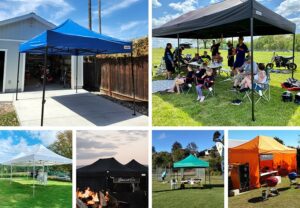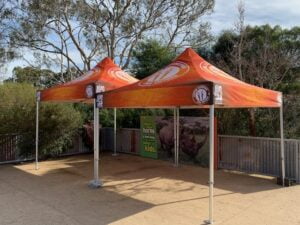When it comes to enhancing outdoor spaces and creating a charming ambiance, gazebos have long been a popular choice. Their elegant structures and versatile functionality make them a sought-after addition to gardens, patios, and event spaces. However, within the realm of gazebos, there are various types, each with distinct features. Two such variations are the traditional gazebo and the pop-up gazebo. In this article, we will delve into the differences between these two types of gazebos and explore their unique benefits.
The Traditional Gazebo:
A traditional gazebo is a permanent or semi-permanent outdoor structure typically made of wood, metal, or a combination of materials. Its design often features open sides, a solid roof, and intricate detailing, contributing to its elegant and timeless appearance. Traditional gazebos are usually built on-site or assembled from pre-made components, making them a more permanent addition to a landscape.

# Key Features of a Traditional Gazebo:
- Durability: Traditional gazebos are built to withstand various weather conditions due to their robust construction materials. However, their durability is often dependent on the quality of the materials used.
- Design Variety: Traditional gazebos come in a wide range of styles and designs, allowing homeowners to choose a structure that complements their overall outdoor aesthetic.
- Customization: As these gazebos are often built from the ground up, they can be customized to fit specific dimensions and design preferences.
The Pop-Up Gazebo:
A pop-up gazebo, also known as a folding gazebo, is a portable and temporary structure that can be set up and taken down quickly. These gazebos are often made from lightweight materials such as aluminum or steel frames and polyester canopies. They are designed to provide temporary shelter and are commonly used at outdoor events, markets, fairs, and camping trips.

# Key Features of a Pop-Up Gazebo:
- Portability: Pop-up gazebos are designed with portability in mind. They come with a convenient folding mechanism that allows them to be easily transported and set up in various locations.
- Quick Assembly: These gazebos can be erected within minutes without the need for special tools or professional assistance. This feature makes them ideal for events and gatherings where time is of the essence.
- Variety of Uses: Pop-up gazebos are versatile and can serve as temporary shelters, shade providers, and event booths. Some models even come with detachable sidewalls to provide additional protection from wind and rain.
- Limited Durability: While pop-up gazebos are convenient, they are not as durable as traditional gazebos. They are best suited for temporary use and may not withstand prolonged exposure to harsh weather conditions.
# Heavy Duty Pop-Up Gazebos and Heavy Duty Gazebos:
For those seeking a more robust option in the realm of pop-up gazebos, heavy-duty pop-up gazebos and heavy-duty gazebos offer enhanced durability. These models are designed to withstand more challenging conditions and are constructed using stronger materials, such as reinforced frames and thicker canopies. They strike a balance between portability and durability, making them suitable for extended outdoor use.


To Buy or Not to Buy a Gazebo:
Deciding whether to invest in a traditional gazebo or a pop-up gazebo depends on your specific needs and preferences. If you’re looking for a permanent and aesthetically pleasing addition to your outdoor space, a traditional gazebo might be the better choice. On the other hand, if you require a portable and versatile shelter for events or temporary outdoor setups, a pop-up gazebo could be the right fit.
In conclusion, both traditional gazebos and pop-up gazebos have their own distinct advantages. While traditional gazebos offer timeless beauty and customization, pop-up gazebos provide convenience and portability. By understanding the features and benefits of each type, you can make an informed decision and choose the gazebo that aligns with your outdoor lifestyle and requirements.

